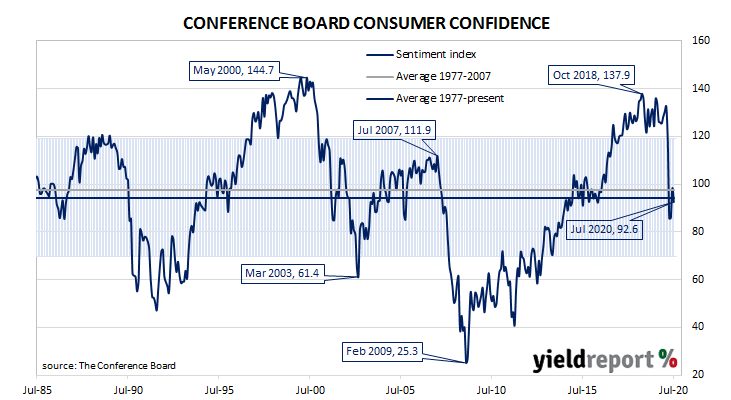Summary: US consumer confidence retreats; view of present conditions improve but future conditions worsen; states with high infection rates experience large declines; “does not bode well” for recovery.
US consumer confidence collapsed in late 2007 as the US housing bubble burst and the US economy went into recession. By 2016, it had clawed its way back to neutral and then went from strength to strength until late 2018. Measures of consumer confidence then oscillated within a fairly narrow band at historically high levels until they collapsed earlier this year.
The latest Conference Board survey held during the first half of July indicated US consumer confidence has retreated after staging a modest recovery through May and June back to the long-term average. July’s Consumer Confidence Index registered 92.6, below the median consensus figure of 94.8 and a noticeable drop from June’s final figure of 98.3. Consumers’ views of present conditions improved but their view of future conditions deteriorated considerably from those held at the time of the June survey.
“Large declines were experienced in Michigan, Florida, Texas and California, no doubt a result of the resurgence of COVID-19,” said Lynn Franco, a senior director at the Conference Board. “Such uncertainty about the short-term future does not bode well for the recovery, nor for consumer spending,”
US Treasury bond yields fell. By the end of the day, the yield on 2-year Treasury bonds had slipped 1bp to 0.14%, the 10-year yield had lost 3bps to 0.58% while the 20-year yield finished 5bps to 1.22%.
In terms of US Fed policy, expectations of any change in the federal funds rate over the next 12 months retained a slight easing bias. OIS contracts for September implied an effective federal funds rate of 0.058%, about 4bps below the current spot rate.

